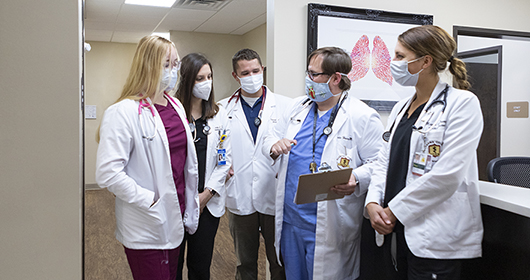ACOM recognizes National Rural Health Day
Today is National Rural Health Day. Rural communities are home to approximately 57 million people across the U.S. with one in five Americans calling a rural community home. With increasing populations in the countryside, unique healthcare needs have arisen.
In rural states like Alabama the shortage of primary care physicians is higher than in other parts of the nation. Twenty percent of the U.S. population lives in rural areas and yet only nine percent of all physicians practice there.
According to the Health Resources and Services Administration, 55 of Alabama’s 67 counties are considered rural, with only seven counties being identified as having enough primary care physicians to provide the minimum of care.
The Southern Rural Access Project conducted a multi-state evaluation of rural health care in the south and found that more than 1 million Alabamians are without access to primary care. The project pinpointed deficiencies in Alabama’s ability to maintain or recruit physicians.
Addressing this shortage was the central focus in the creation of the Alabama College of Osteopathic Medicine (ACOM). As one of 37 colleges of osteopathic medicine and the first in the state of Alabama, the institution is the only osteopathic medical school that is an academic division of a county healthcare authority. ACOM’s relationship with Southeast Health has empowered it to impact the local community in a unique way.
In January 2020, the Southeast Health ACOM Ashford Clinic opened, increasing access to healthcare for citizens with a focus on the education of ACOM students. The clinic services include internal medicine, pediatrics and osteopathic manipulative medicine. Justin Hovey, MD, FAAP, Medical Director of the clinic, believes it has brought much needed care to an underserved area.
“The clinic provides care to a large swath of Wiregrass residents who no longer have to drive long distances to be seen by a provider. Access to care has been increased for this population tremendously. We continue to work to improve that access as we move forward,” Hovey said.
The incorporation of ACOM students into the clinic is one way the college continues to pursue its mission of producing primary care physicians to serve the medically underserved areas of Alabama, the Tri-State region and the nation.
“Having students in this rural setting is unique as well,” Hovey said. “Their presence really changes the dynamic and experience that the local patients have. By seeing a student and provider during an appointment, the patients get a very thorough visit.”
The exposure to primary care disciplines during clinical training and rotations is an important part of inspiring medical students to consider these fields for their future careers. According to a 2018 American Osteopathic Association report, approximately 57 percent of DOs pursue a career in primary care, specializing in family medicine, internal medicine or pediatrics. ACOM has observed this trend among its graduates with at least 50 percent of its four graduating classes pursuing primary care, and is hopeful that many these physicians will return to the state to practice in rural communities.
“Rural health clinics are paramount to the changing rural population and dynamics of population health,” Hovey explained. “We need more in order to provide critical evidence-based care to an underserved population.”

